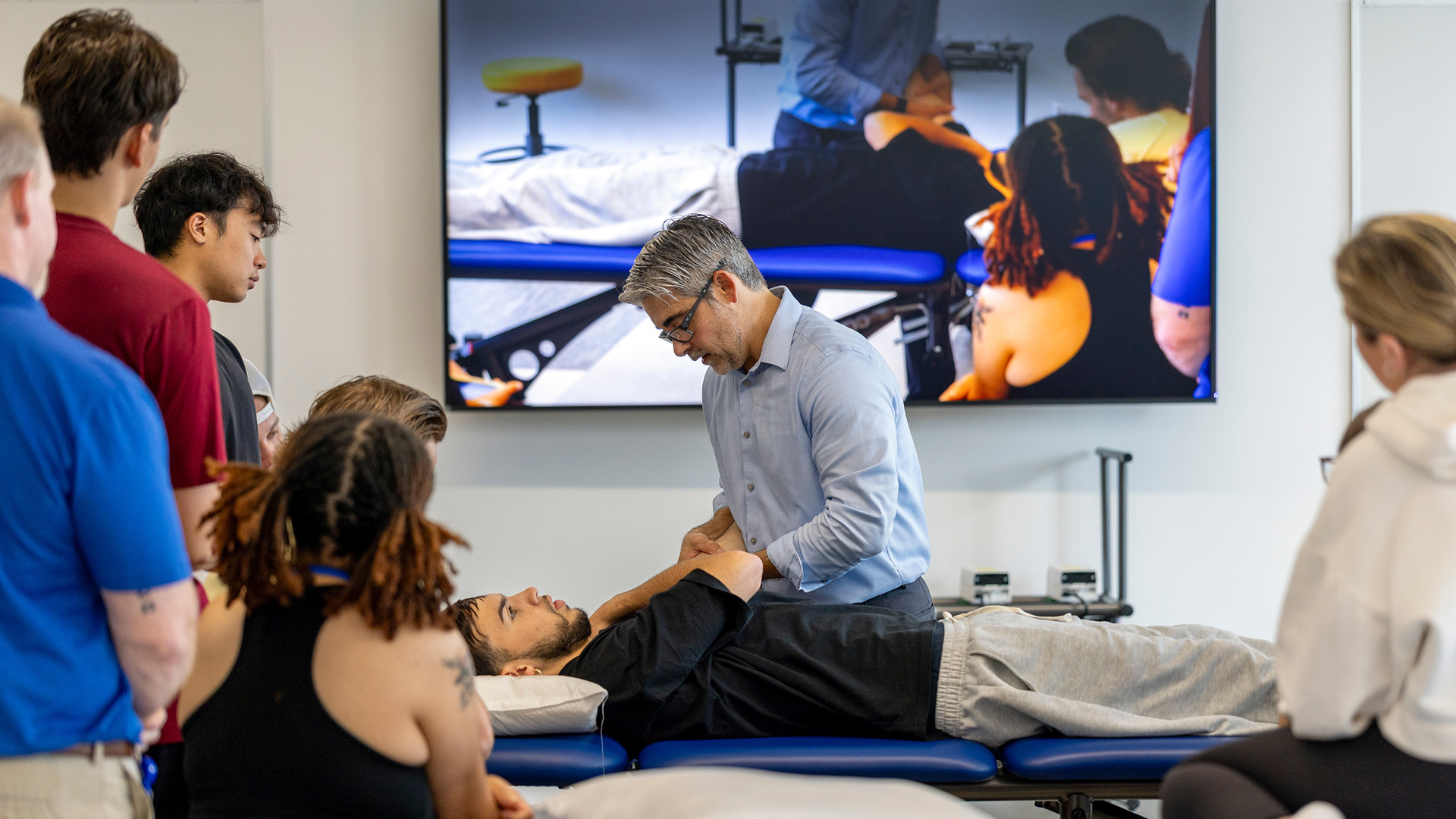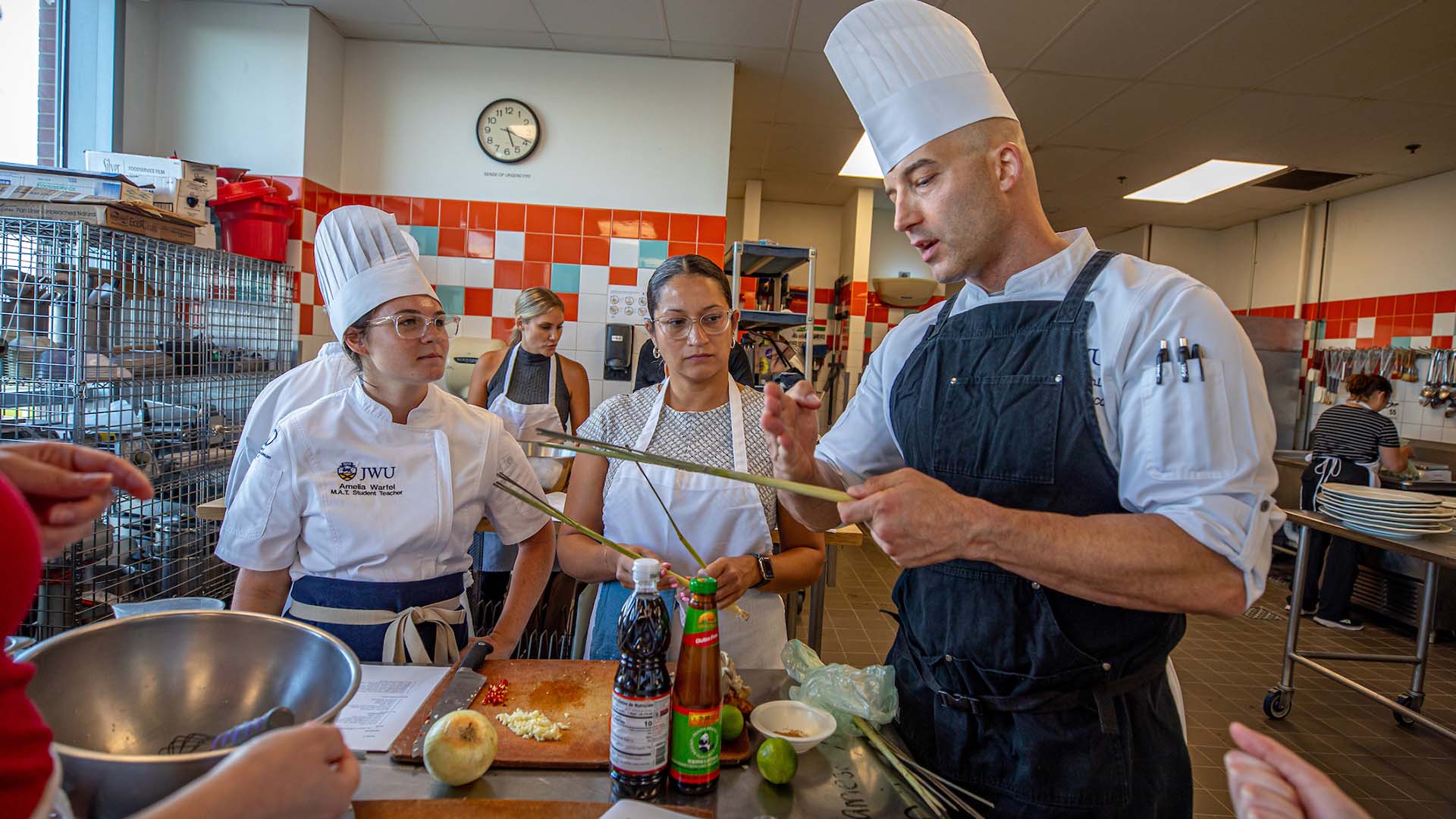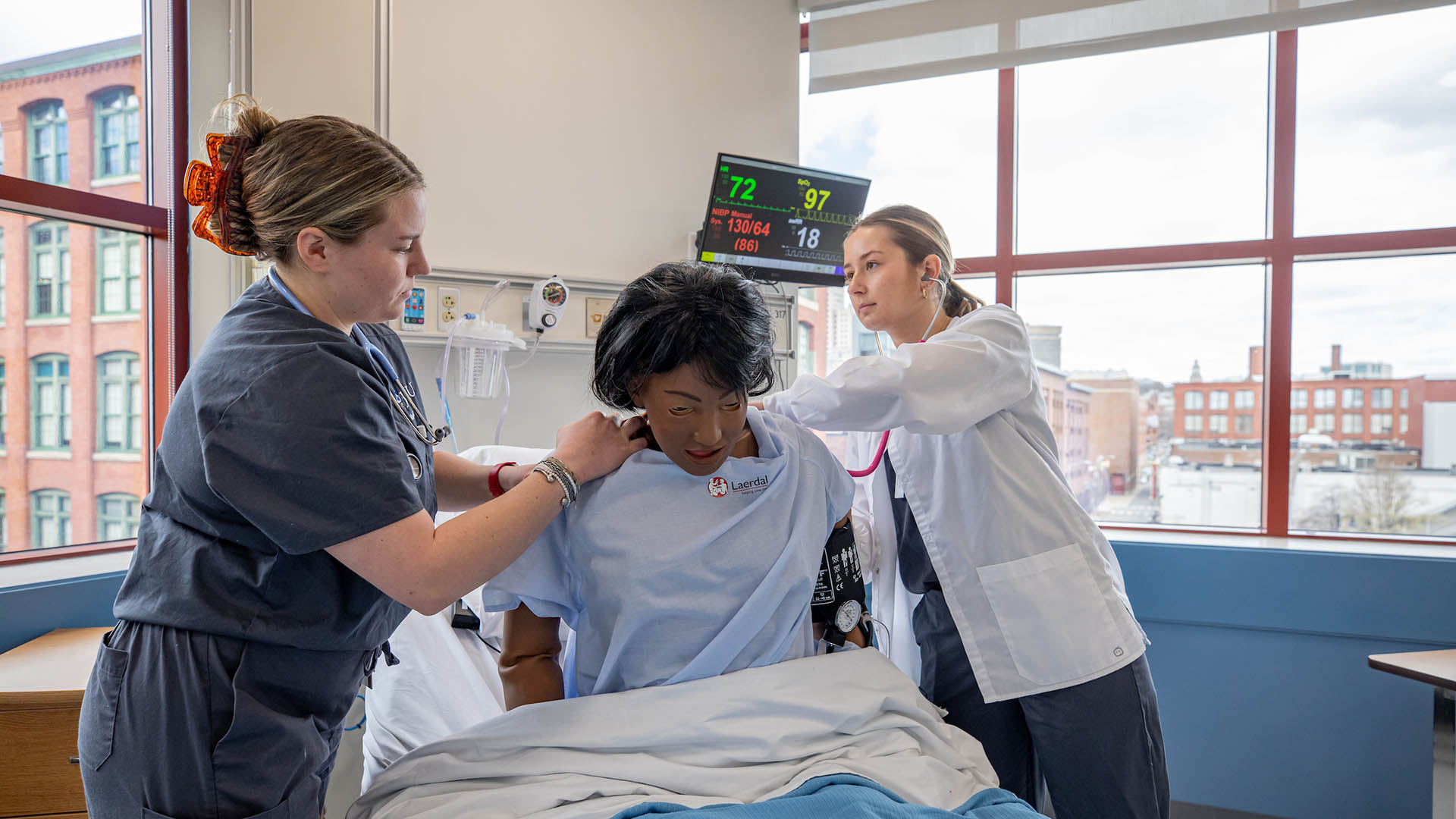PA Students Step Into the Kitchen
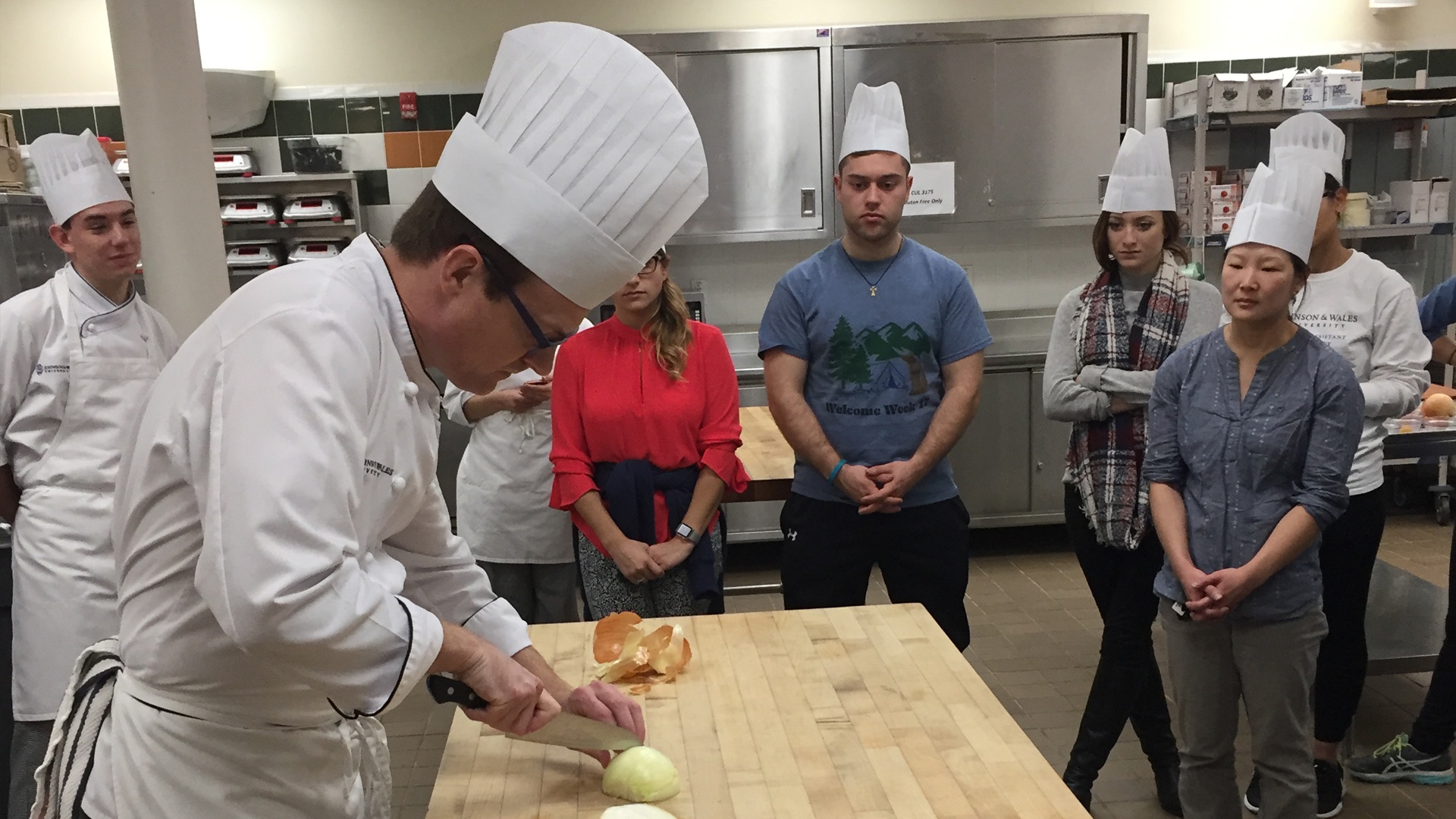
Sixteen Physician Assistant Studies students stream into a kitchen lab in the College of Culinary Arts on the Harborside Campus. Waiting for them is Todd Seyfarth ’01, RD, CSSD, associate professor and department chair in the College of Health & Wellness, and his culinary student assistant. They're standing near several lab benches set up for the day’s class. On each bench is a container of cauliflower béchamel, a white sauce that will play a key role in the lesson Seyfarth has planned to teach these physician assistants-to-be about culinary medicine.
"What we eat has never been more important."
Culinary medicine — the art of food blended with the science of medicine — plays an increasingly important role in the prevention and treatment of disease. Its goal is to improve the patient’s condition through his or her diet. And according to George Bottomley, DVM, PA-C, Interim Program Director of the Center for Physician Assistant Studies, it's something every PA should know.
“With diabetes, cardiovascular and other obesity-related diseases increasing in every age group, what we eat has never been more important,” says Bottomley. When he founded the PA program at Johnson & Wales, Bottomley teamed up with Seyfarth to create a Food and Medicine course to enable PAs to counsel their patients on diet.
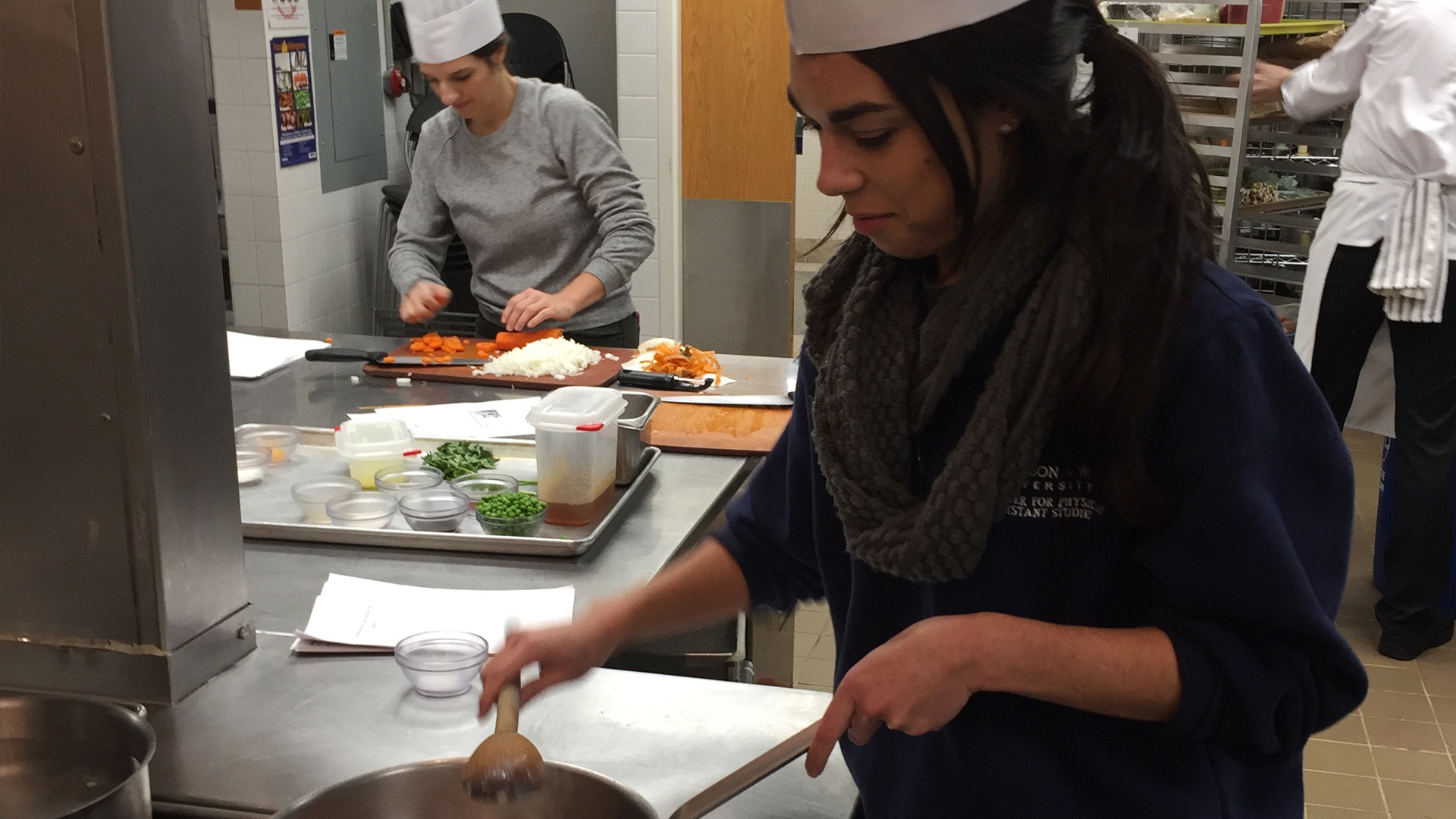
The goal isn’t to replace registered dietitians, says Seyfarth, himself an RD. “If a PA has a patient who has a lot of concerns, a lot of comorbidities like diabetes, they probably should refer the patient to a registered dietitian,” he notes. “But if the patient is on the right track, or may not have the time, money or resources to go see a dietitian, the PA now has a couple of tricks to use to address the problem.”
Turning 1 Recipe Into 20
Because most of us are too busy to cook at home every night, Seyfarth teaches one recipe that can be turned into many. “The main focus of today's class is using a cauliflower béchamel as a cream substitute. And then we’ll use that cream substitute to make shepherd’s pie, queso dip, mashed potatoes and all different kinds of soups,” he says.
Part of his focus is to teach students how to reduce fat. But his main focus is how to incorporate more vegetables. “How do you, one, create recipes that people would want to eat that have vegetables in them, and two, hide vegetables and get more of them into people’s diets?”
Seyfarth believes patients need to get practical advice. “The idealistic approach would be, everybody eats kale and quinoa and just two ounces of meat a day, but that’s just not realistic. It’s a matter of being realistic, being practical, having resources and recipes and tips and tricks. Even cooking classes. That’s a big thing with patients right now — creating teaching kitchens.”
"This course will be applicable to every person that we treat."
There’s a lot of little things that PA students can practice in their kitchen at home, he says. His hope is that students will now have a bag of tricks that they might pull out of when counseling patients. It’s all part of the PA program’s mission to prepare collaborative practitioners of patient-centered, humanistic health care.
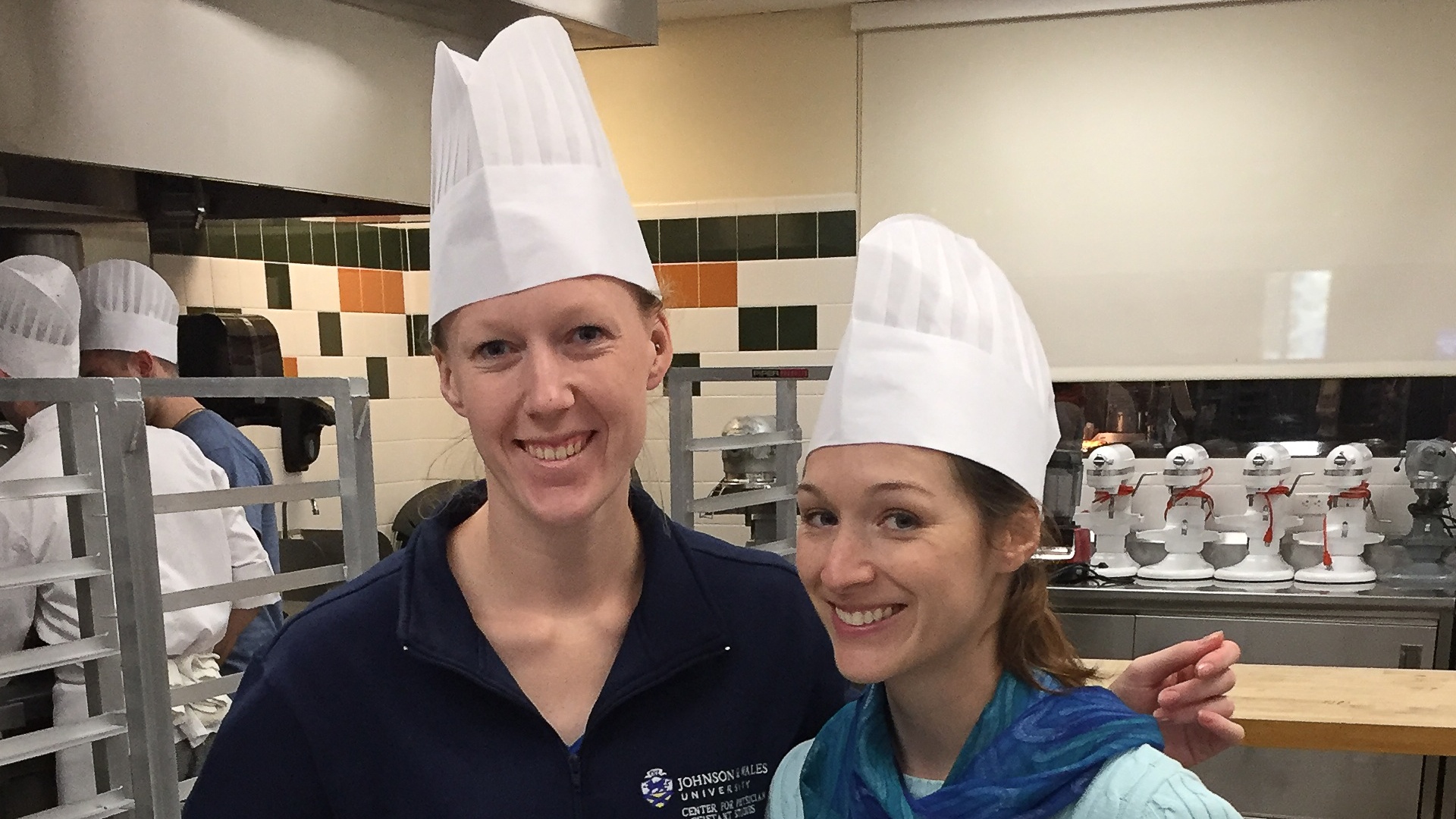
“A PA, or any provider, who not only knows what a healthy diet is, but also knows how to talk to a patient about the best way to select and prepare foods, helps to reinforce what the patient is told by the dietitian and others on the healthcare team,” says Bottomley.
PA student Alysse Pazienza '19 looks forward to using what she has learned in class. “Everyone has to eat, so this course will be applicable to every person that we treat and care for,” she says. “While the information that we learn during lecture is critical, the ability to apply our knowledge in the kitchen and really get our hands dirty, will help us to be more well-rounded, compassionate physician assistants.”
Cauliflower Béchamel
Yield: 1 gallon
Ingredients
1 head cauliflower
½ gallon whole milk
½ cup unflavored whey protein isolate (optional)
¼ cup extra virgin olive oil
1 tsp salt
¼ tsp white pepper
Directions
- Break the head of cauliflower down into medium sized florets.
- In a heavy based sauce pan, add the cauliflower and milk, and cook under very low heat, simmer until fully tender and falling apart.
- In a quality blender, add the cauliflower and ONLY enough milk to come even with the florets in the blender jar.
- Blend on high for 60 to 90 seconds, or until fully pureed and smooth.
- Reduce the speed of the blender and add the whey, olive oil, salt and pepper.
- Use immediately as you would a traditional béchamel or refrigerate for up to 7 days.
Recipe courtesy of Todd Seyfarth.
